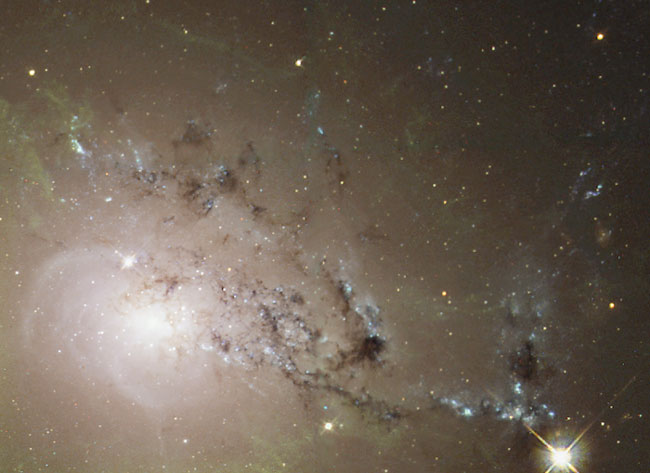
|
Explanation: In NGC 1275, one galaxy is slicing through another. The disk of the dusty spiral galaxy near the image center is cutting through a large elliptical galaxy, visible predominantly on the lower left. Galaxies can change significantly during a collision like this, with gravitational tides distorting each galaxy and gas clouds being compressed and lighting up with new star formation. Galaxy collisions occur in slow motion to the human eye, with a single pass taking as much as 100 million years. NGC 1275 is a member of the Perseus cluster of galaxies that lies about 230 million light years away toward the constellation of Perseus. Each galaxy spans about 50,000 light years across. The above picture is a composite of images taken by the Hubble Space Telescope in 1995 and 2001.
|
January February March April May June July August September October November December |
| ||||||||||||||||||||||||||||||||||||||||||||||||
NASA Web Site Statements, Warnings, and Disclaimers
NASA Official: Jay Norris. Specific rights apply.
A service of: LHEA at NASA / GSFC
& Michigan Tech. U.
Based on Astronomy Picture
Of the Day
Publications with keywords: galactic collision - NGC 1275
Publications with words: galactic collision - NGC 1275
See also:
